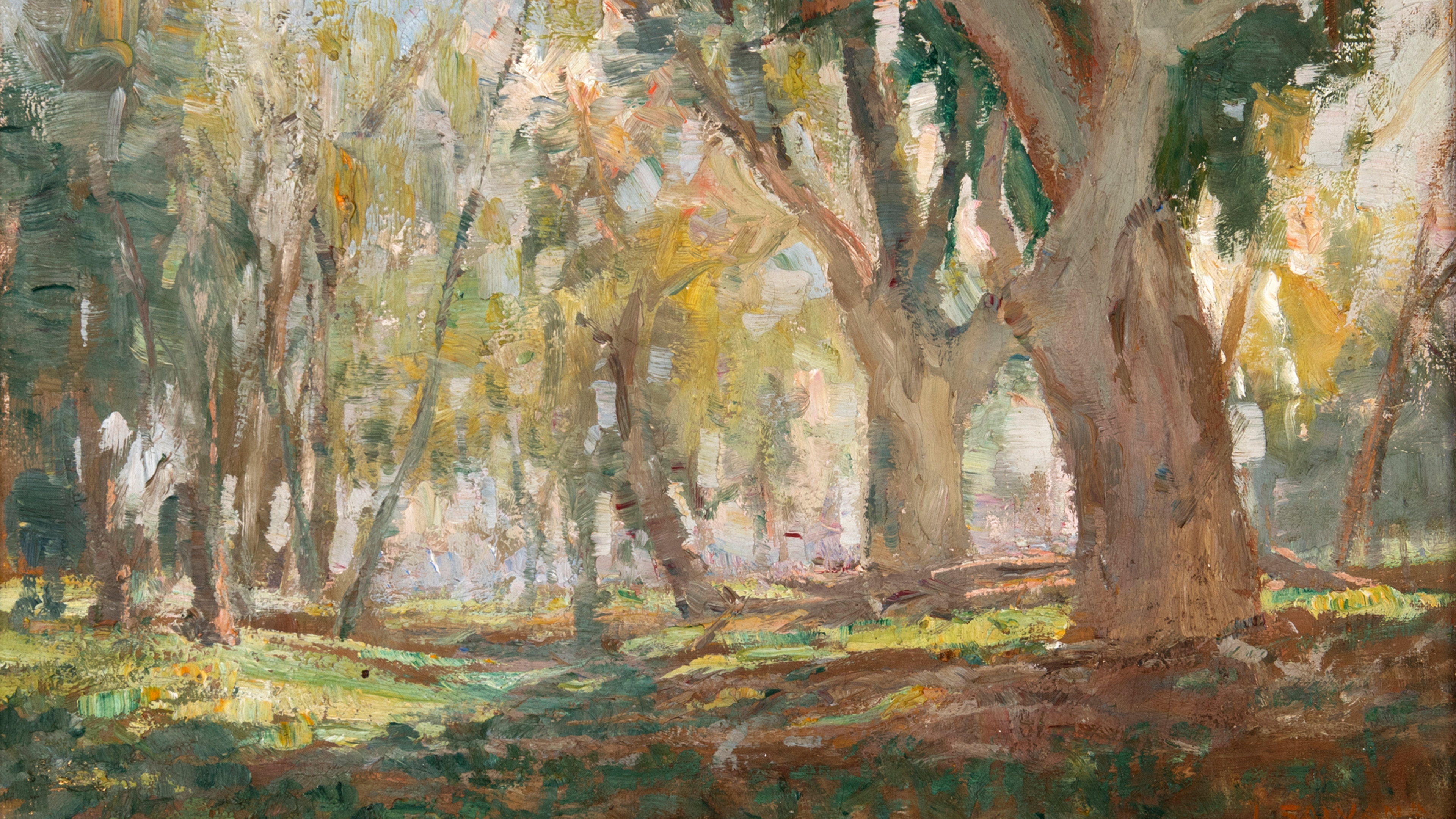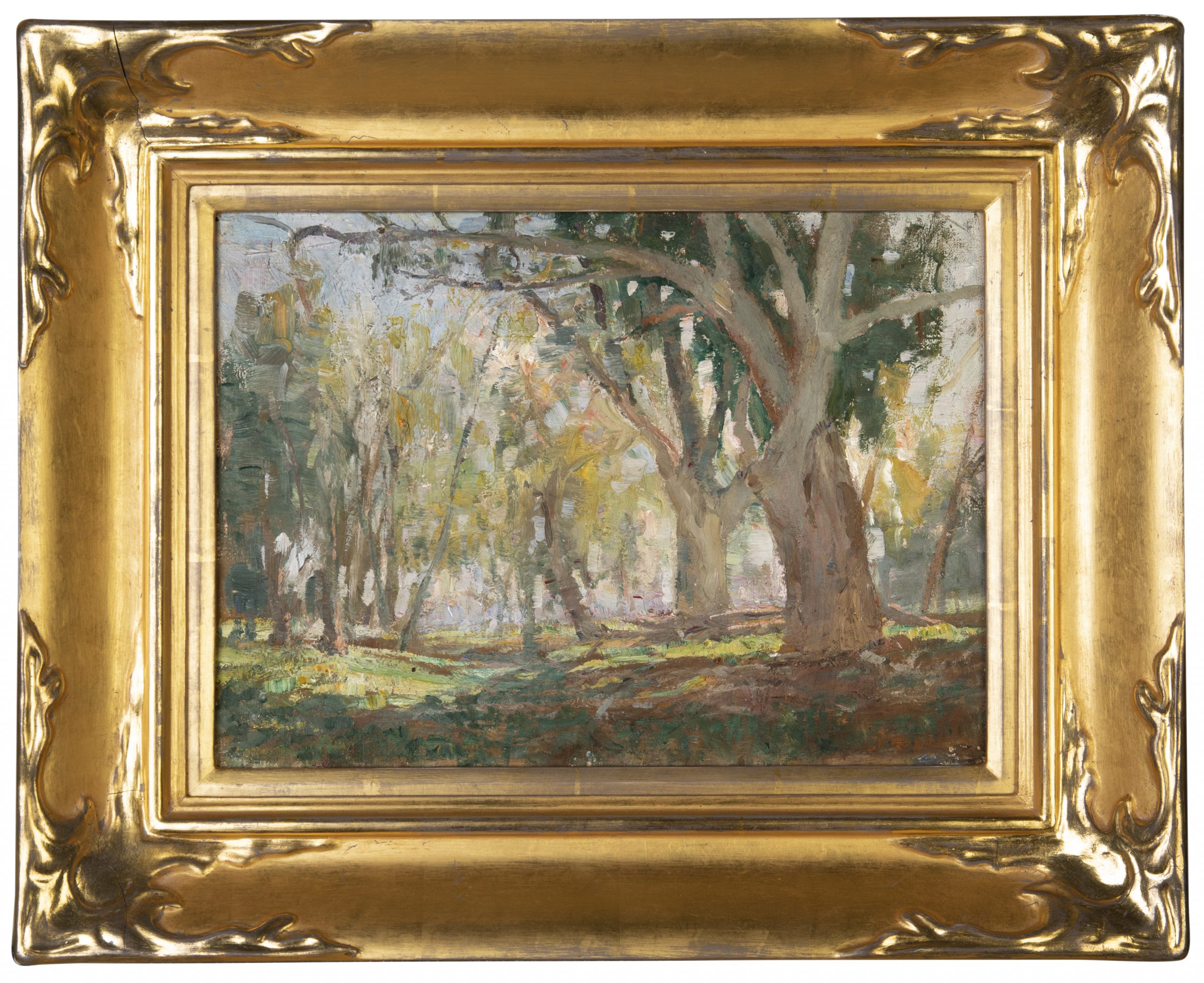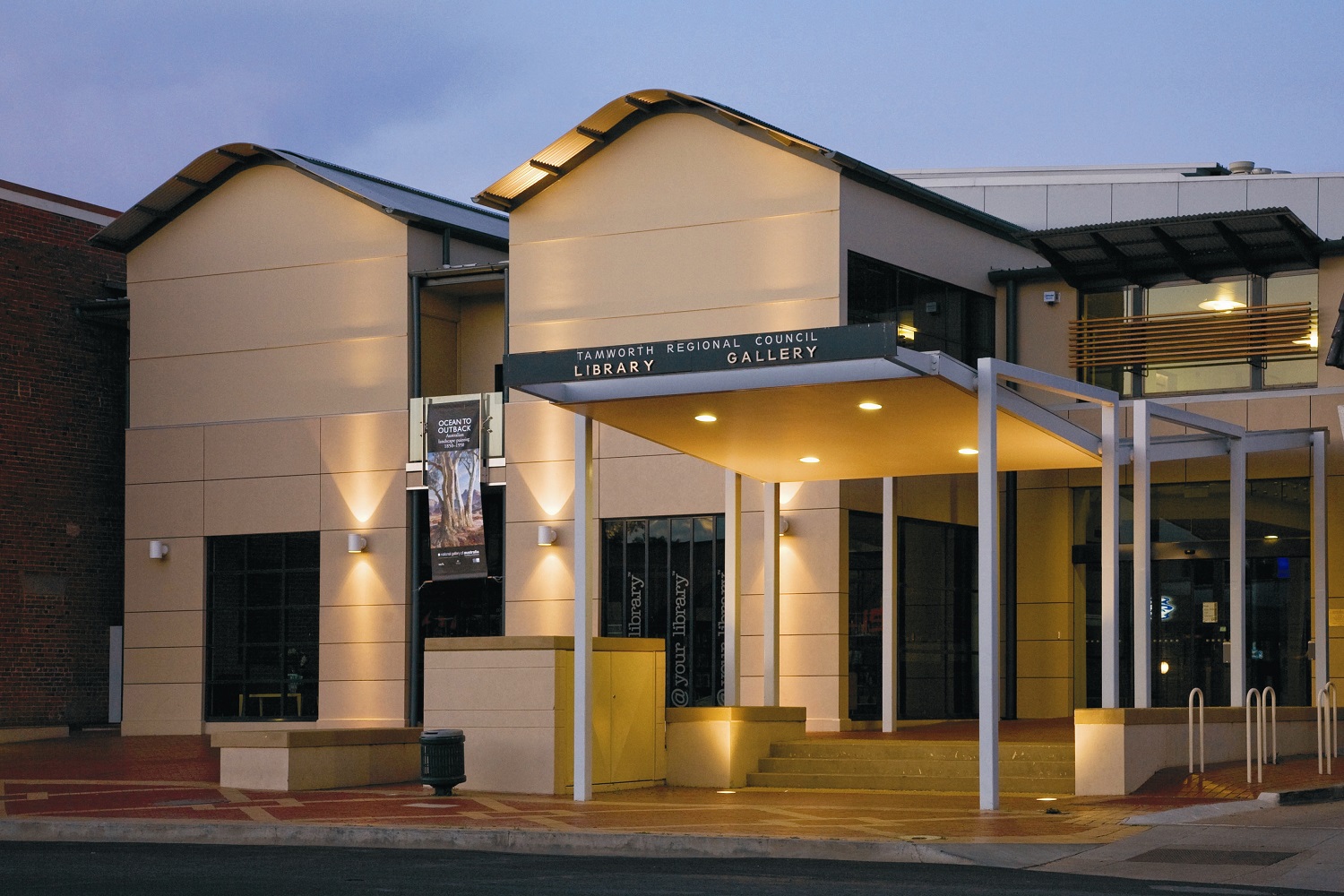Far Removed
John Salvana’s Dry Billabong
Like the artist who painted it, A Dry Billabong, Gunnedah, NSW (1950) is caught between worlds.
John Salvana’s (1873-1956) portrayal of gum trees baking in the sun is typical for its time, even somewhat passé. The artwork captures the Australian landscape in an Impressionist style, a manner which had originated in France in the 1870s and had since been popularised by Australian artists like Arthur Streeton. Complete with an ornate gold frame, this painting reflects the awkward growing pains that came with transplanting European art styles to Australia.
Salvana was born in a small gold mining town in the state’s Central West, Ironbark (now called Stuart Town), on Wiradjuri country. That made him part of the growing number of those in settler communities who had been born in Australia – regionally, no less. It is no surprise that a feeling of dissonance is part of his work when he was replicating a style so far removed from his own context.
Salvana’s early art education was restricted to photographs and cheap prints which made their way from the coast. He would not receive a formal arts education until he left home to Sydney where he attended the Royal Art Society of NSW. Here he saw the work which inspired him.
With the artistic tide turning on Impressionism in Sydney, Salvana’s work seemed out of step with the urban art world. One critic, Barry Stern, was scathing. He stated that Salvana’s artworks were ‘only saved from mediocrity by the excellent frames.’ Another, William Moore, was more measured. He noted that while Salvana was always improving, he fell short when it came to capturing atmosphere.
Salvana understood that his regional upbringing had prevented him from accessing suitable early arts education. In 1919, his desire to improve circumstances for future artists inspired him to donate a substantial art collection to Tamworth which led to the opening of a gallery.
Now, over a century later, the Salvana Collection is still a beloved part of Tamworth Regional Gallery, giving local artists a place to build community and make art closer to home.





